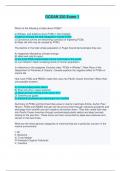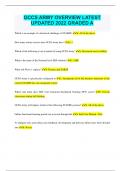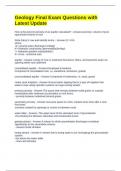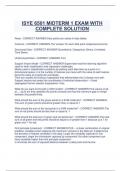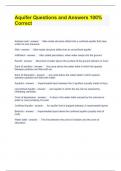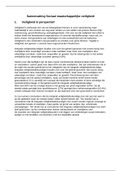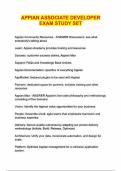Exam (elaborations)
OCEAN 320 Exam 1 | Answered with Rationales
- Course
- Institution
OCEAN 320 Exam 1 | Answered with Rationales Which of the following is false about PCBs? a) Whales, and dolphins store PCBs in their blubber b) Marine animals are well equipped to handle PCBs c) Cancerous tumors are becoming a product of ingesting PCBs d) Mass die offs may be caused by PCB's The...
[Show more]
